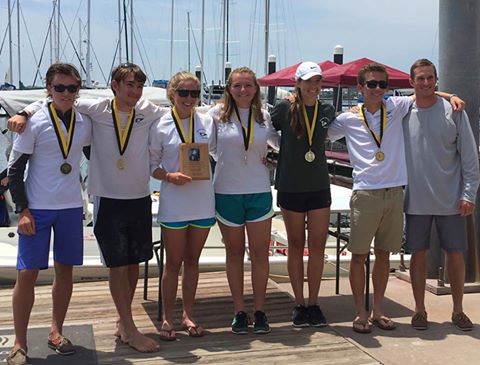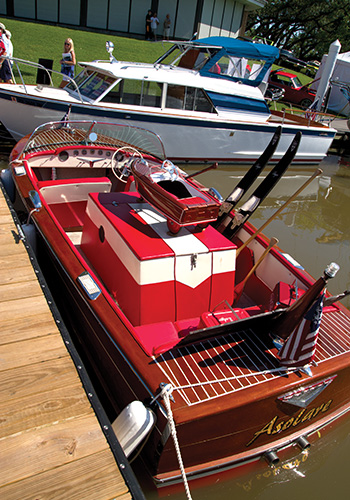
This 27-inch trout came from a mix of widgeon and shoal grass.
By Capt. Steve Soule
Galveston Bay doesn’t have a large amount of sea grass. Prior to 2008 we had very little at all, with the exception of Christmas Bay and three areas where grass had been planted by the Galveston Bay Foundation during the late 1990s.
Galveston’s West Bay did historically have sea grasses, like much of the Texas coastline, but they had long since been wiped out. During the 1990s, when I moved to the Galveston area and started fishing, Christmas Bay was the only area where I could consistently find sea grass beds to fish. Though, there were years when certain coves in West Galveston would grow sea grass, it was primarily widgeon grass. It might grow well one year and then not be seen in the area for several years. Back then, I didn’t really realize why this grass was here some years and not others. I did however always know the benefit of the sea grasses and the incredible habitat that it provides for sea life.
Enter the Galveston Bay Foundation and their efforts to restore the bay in the mid to late 90s. They had already been involved in some shoreline restoration projects where they would replant shoreline grasses (Spartina). They also planted sea grass in three areas along the south shoreline of West Bay at Dana Cove, behind Galveston Island State Park, Snake Island Cove and at San Luis Pass behind the old water treatment plant. All of these areas still grow grass well, with Dana and Snake Island probably being the most prolific, and these grasses still thrive today. The type of sea grass that was planted at these areas is shoal grass
These patches of planted grass were a fantastic improvement for the bay. Prior to these plantings, there was only sporadic grass growth along the north shore spoils, primarily widgeon grass. Due to these grass projects and an interesting set of recurring circumstances, the shorelines of West Bay have been transformed.
All of us who fish are well aware of how breezy Galveston can be during spring with wind directions predominantly from the south or southeast. There are many days when 15-25 mile per hour winds are the norm. Stepping back and taking a look at the big picture, and remembering the three areas where grass was planted and thriving, add some powerful south winds and a seeding period in late spring, and the result is spotty grass growth along north shore spoils. The first area that I remember seeing it was west of Karankawa cut. This long flat filled in with grass rather quickly while other areas took slightly longer to grow. Next was the stretch from Greens Cut to Karankawa Cut. Over the years since, this grass has spread and now covers nearly every inch of the West Bay spoils.
Types of Galveston Sea Grass
We don’t experience the same level of grass growth every year, nor do we have the same grasses appearing. We have high and low salinity years, and as it turns out, some grasses are more adept at growing during each of these types of years.

Spartina grass
Spartina grass (Spartina alterniflora) along our shorelines grow in both high and low salinity and don’t seem to be effected much by annual changes.

Shoal grass.© Hans Hillewaert
Shoal grass (Halodule wrightii) grows well during higher salinity years and has some interesting characteristics. This species, native along nearly all of the Texas Coast, is a straight bladed grass with small fibers along its blades. These fibers do an amazing job of filtering small particulate matter from the water column. This is the grass that gives us very clear water by trapping suspended silt in the water column so common in the Galveston area.

Widgeon grass
Widgeon grass (Ruppia maritima), grows prolifically in lower salinities and it is very different when compared to shoal grass. Widgeon grass has multiple offshoots along the length of the plant stem, grows rapidly during low salinity periods and grows much taller than shoal grass. This grass will continue to grow rapidly during spring and will often grow to the water’s surface. Interestingly, as we often experience high tides in spring in conjunction with higher south winds, widgeon grass will grow to the level of the water during these high tides. This sounds great, and as it benefits the environment, it is. Due to the multiple offshoots, greater height and the density of its growth, this grass makes for an exceptional cover structure for all of the small prey animals that inhabit these areas, and the predators that follow them.
Not that it makes much difference, nor can we change what mother nature sends our way in terms of weather, but it will help you to understand when and where these grasses grow and how they will impact the water where they are present. Shoal grass is an incredible water filter and provides very good cover and habitat for small fish, crabs and shrimp that redfish and trout frequently feed upon.
Widgeon grass on the other hand, does not tend to filter the water column nearly to the degree that shoal grass will. Widgeon grass will definitely grow much thicker and provide a great habitat for both prey and predator, but will not give us the clarity of water that shoal grass provides.
For those who have been fishing the grassy areas over the past few years, you are quite aware that 2015 and now 2016 have not been great water quality years. The underlying case has been low salinity. Though we do have some areas with shoal grass, for the most part the bay floor has been taken over by widgeon grass and will stay that way until late summer when salinities are higher. Unfortunately, this is in my experience typically too late for the shoal grass to recover and grow as the early season growth of the widgeon will choke out and prevent photosynthesis.
One last note about sea grasses and Galveston Bay, and well the entire Texas Coast for that matter. Don’t quote me on the exact timing, but two-to-three years ago, Texas Parks and Wildlife department passed a law prohibiting the intentional destruction of sea grasses. These grasses are a valuable and limited part of the overall habitat, providing cover structure for numerous animals both predatory and prey. This resource can be damaged and frequently is by boaters either unaware or not concerned. Given the rate of growth and expansion of the areas with sea grasses over the past ten years, we can only hope to see a continuation of this trend. With some cautious stewardship from all who operate boats in these areas, this may be a trend that continues and provides excellent habitat and fishing for many years to come.






 REEF SPECIES
REEF SPECIES


 Blackburn Marine
Blackburn Marine








 Ship Store – Conveniently located in the heart of the marina next to the boat launch. The Ship Store offers all of your general boating needs as well as basic food and drink items. Items can be special ordered and delivered to your boat upon request.
Ship Store – Conveniently located in the heart of the marina next to the boat launch. The Ship Store offers all of your general boating needs as well as basic food and drink items. Items can be special ordered and delivered to your boat upon request. The View Deck – Come enjoy a beer and the view!
The View Deck – Come enjoy a beer and the view! Boat Brokerage – Johnston & Mayer is GYB’s onsite boat broker who offers years of experience in both power and sailboats.
Boat Brokerage – Johnston & Mayer is GYB’s onsite boat broker who offers years of experience in both power and sailboats.
 By Capt. David Dillman
By Capt. David Dillman




 About Lakewood Yacht Club:
About Lakewood Yacht Club: 


































 A key ingredient to having a successful outdoor event is the weather and Mother Nature provided two nice days for the 21st Annual Keels and Wheels Concours d’ Elegance held the last weekend in April at Lakewood Yacht Club in Seabrook.
A key ingredient to having a successful outdoor event is the weather and Mother Nature provided two nice days for the 21st Annual Keels and Wheels Concours d’ Elegance held the last weekend in April at Lakewood Yacht Club in Seabrook.



